Internship Highlight: An Interview with Cierra Dawson and Brooke Morrow
March 2023
Cierra Dawson and Brooke Morrow are interns with IAE, and soon conclude their yearlong internship experience working with us. To highlight their involvement with IAE and accomplishments over the last year, we’ve asked them a few questions about their work with IAE—and what comes next!
What interested you in being part of the Institute for Applied Ecology?
C: IAE’s mission statement aligned perfectly with the things I wanted to do right out of undergraduate. I stumbled across the job posting while I was finishing up my B.S. Environmental Science at Oregon State, and it was a perfect fit for me as I specialized in Applied Ecology!
B: After obtaining my B.S. in Botany, I was really excited to join IAE to gain experience in the field and learn from more experienced ecologists.
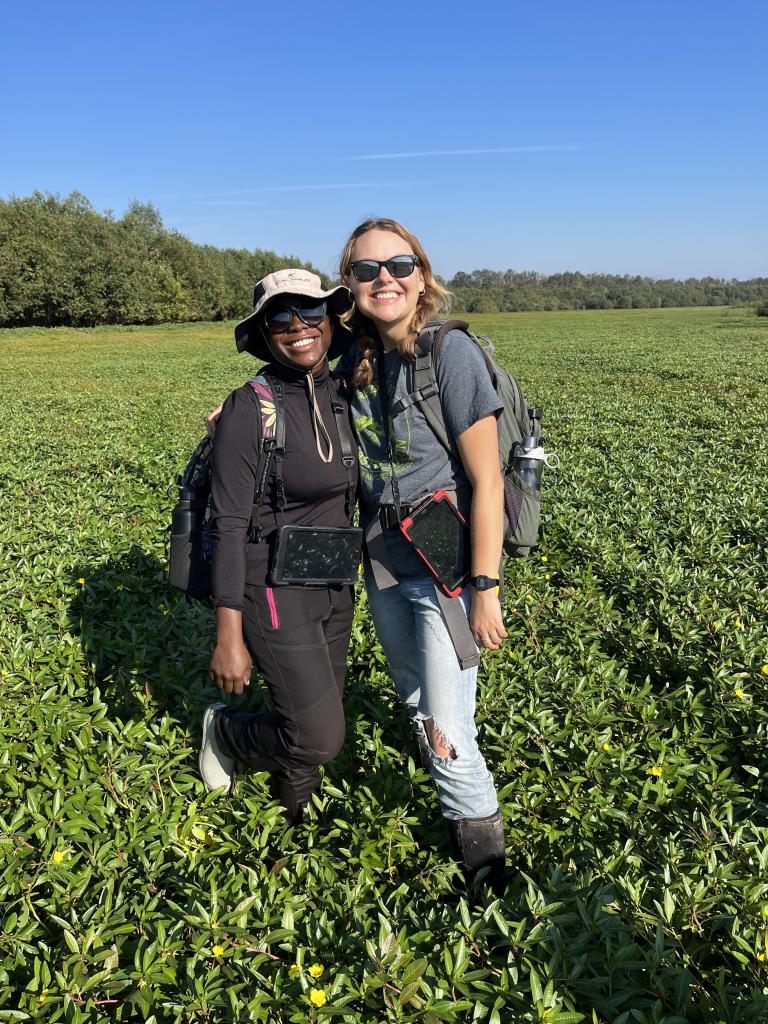
What projects did you work on during your time here?
C: We’ve worked on a ton of projects in the past year. Rare plant monitoring, restoration work like weed mowing and pulling, co-authoring a report on experimental treatments for the noxious weed Italian arum (Arum italicum). Lots of field work including camping, hiking, scouting, planting, digging–you name it!
B: We had the opportunity to do a bit of everything at IAE. We conducted rare and endangered species monitoring throughout Oregon, mowed lots of blackberry, and assisted with various mapping projects. We worked in the greenhouse, on the farm, cleaned seeds, planted thousands of native seeds, bulbs and plugs and helped with a variety of data-management projects and report writing.
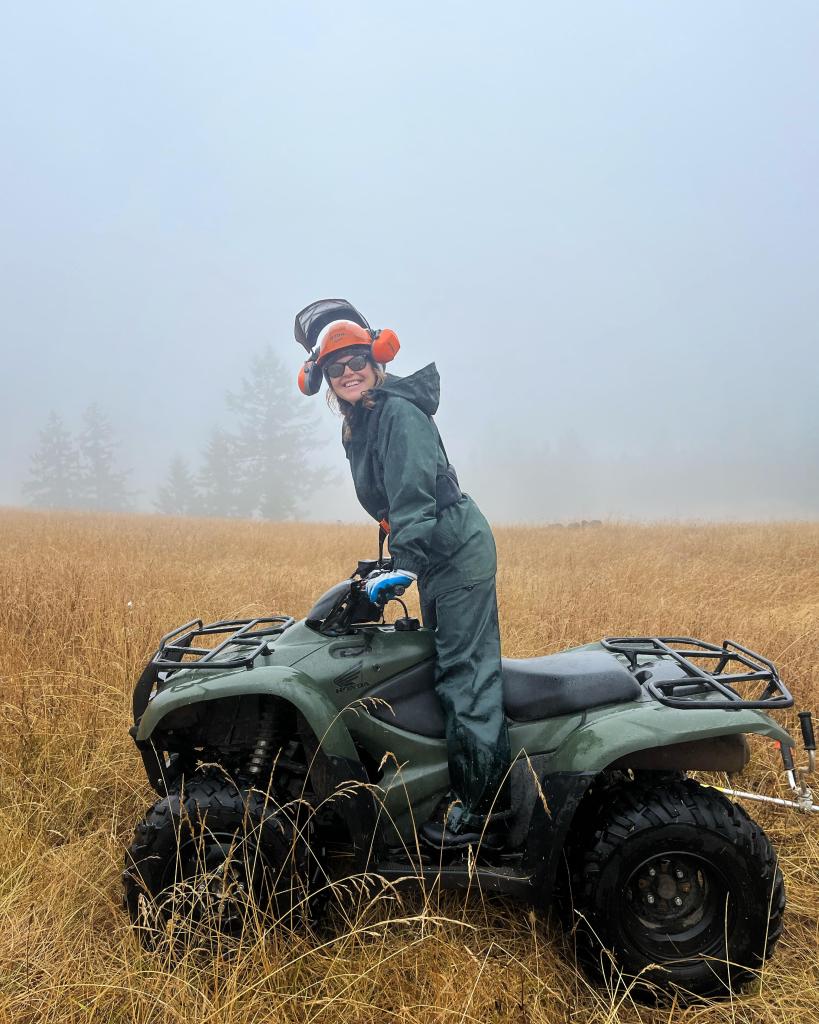
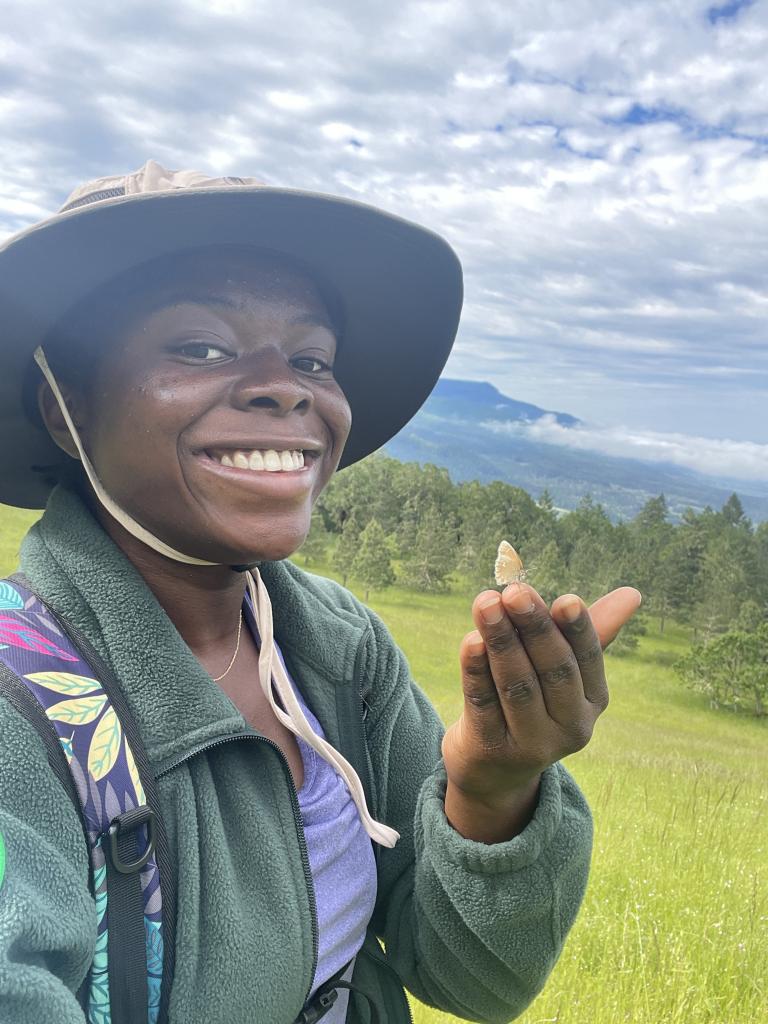
What was your proudest moment at IAE?
C: If I had to narrow it down to one particular moment, I think my proudest moment would be submitting an article I wrote to the Native Plant Society of Oregon for their monthly bulletins. The article talks about the surveying effort for new populations of Pumice moonwort (Botrychium pumicola) this past summer 2022, which I got to be a part of.
B: My proudest moment happened recently in the field when I realized how many plants I am now able to identify. It was a great moment of acknowledging how much I have learned from this experience.

What was a challenge that you faced during your internship, and how did you overcome it?
C: My biggest challenge I’ve faced during this internship is actually internal. It’s been this constant battle of putting so much pressure on myself to learn as much as I can within the framework of a year knowing that this position is rare and temporary. I’ve had to “have a talk with myself” many times in the last twelve months to tell myself that I *am* making the most of my time here and that it’s impossible to know everything!
B: As a recent graduate, I was very confident in my botany abilities when I began my internship. I quickly realized though, that I had a lot to learn and hands-on experience in the field is, in many ways, more valuable than being in school. With this in mind, I came to work every day with an open and inquisitive mind and with the goal of learning everything I could. I’m excited to continue gaining experience and learning new things as I head into my second field season.
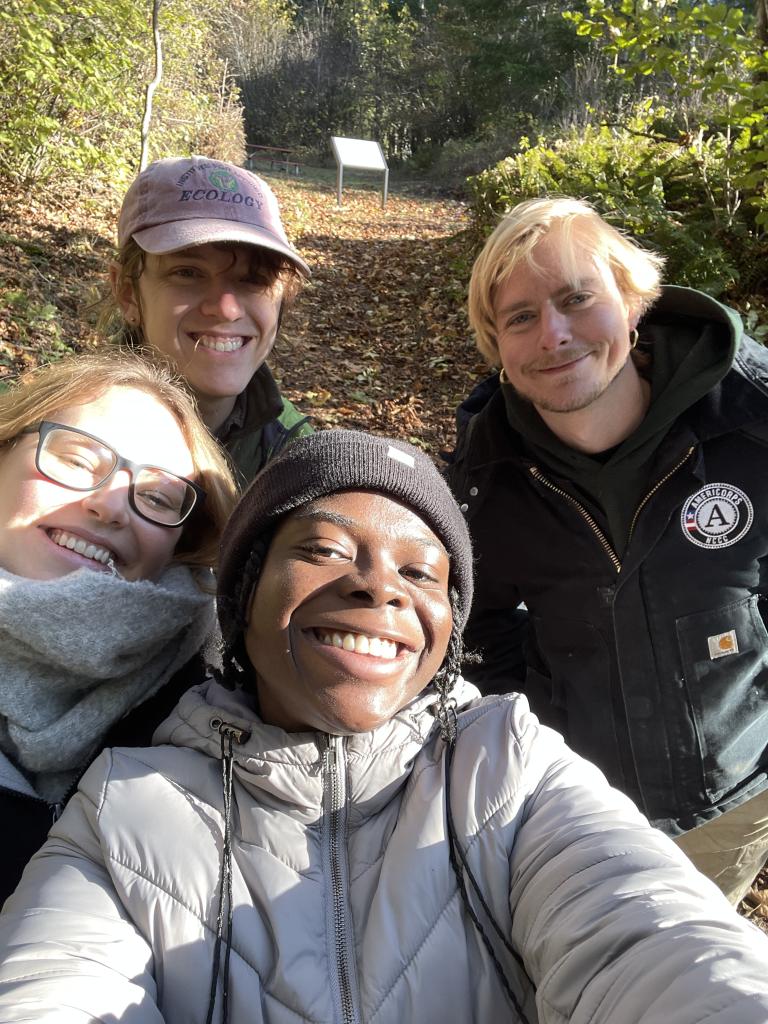
What was the most important lesson you learned while at IAE?
C: That there are multiple ways to learn things. As someone who entered this job right on the heels of finishing my degree, it was nice to see that even if academia did not teach you all of the things you feel like you “should” know by the end of your degree, it is more than possible to be taught those things in a job after the degree. Almost everything is trainable.
B: It’s impossible to know everything. Part of the fun of working in the field is that there is always something new to learn.
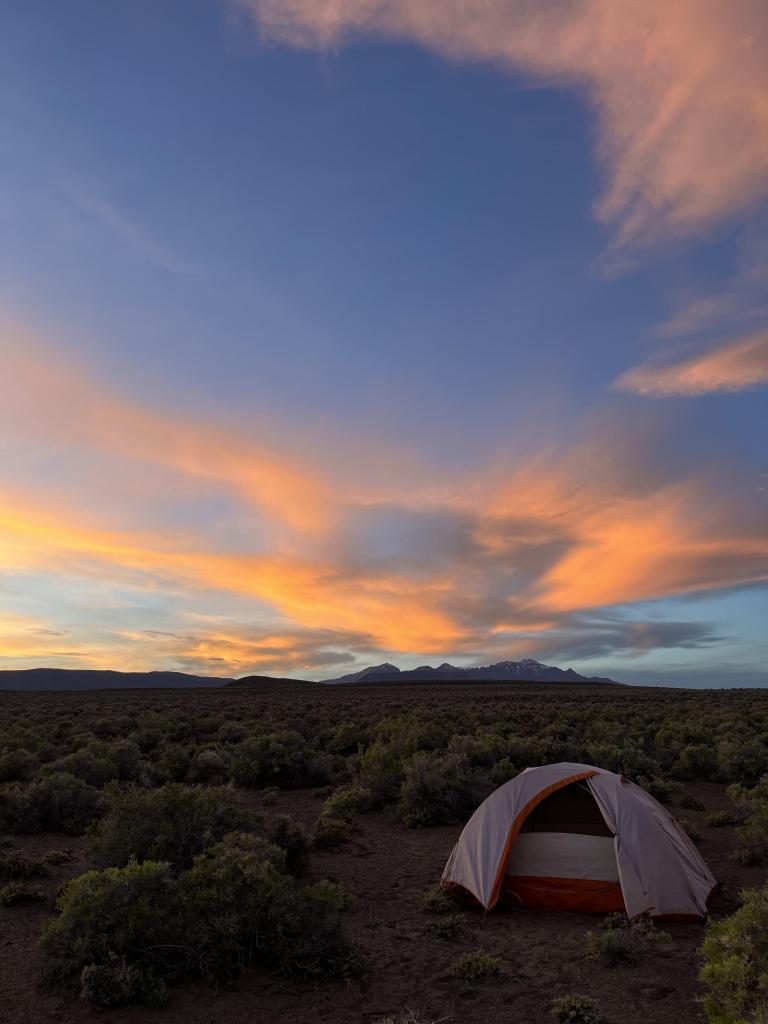
What are some of the tools/resources you learned to use while at IAE?
C: I appreciate all of the tools I’ve learned in my time here. I’ve gained field skills such as plant identification, plant monitoring, data collection, etc. Technical tools such as ArcGIS Pro, Survey 123, and Field Maps. And a couple of really important websites to refer to such as USDA Plants, Calflora, Oregonflora, and more.
B: I definitely refined my plant identifying abilities and learned how to conduct plant monitoring. I also learned how to safely operate chainsaws, mowers, ATVs and various seed-cleaning machines. Other tools include Field maps, ArcGIS, Oregon Flora and USDA Plants.
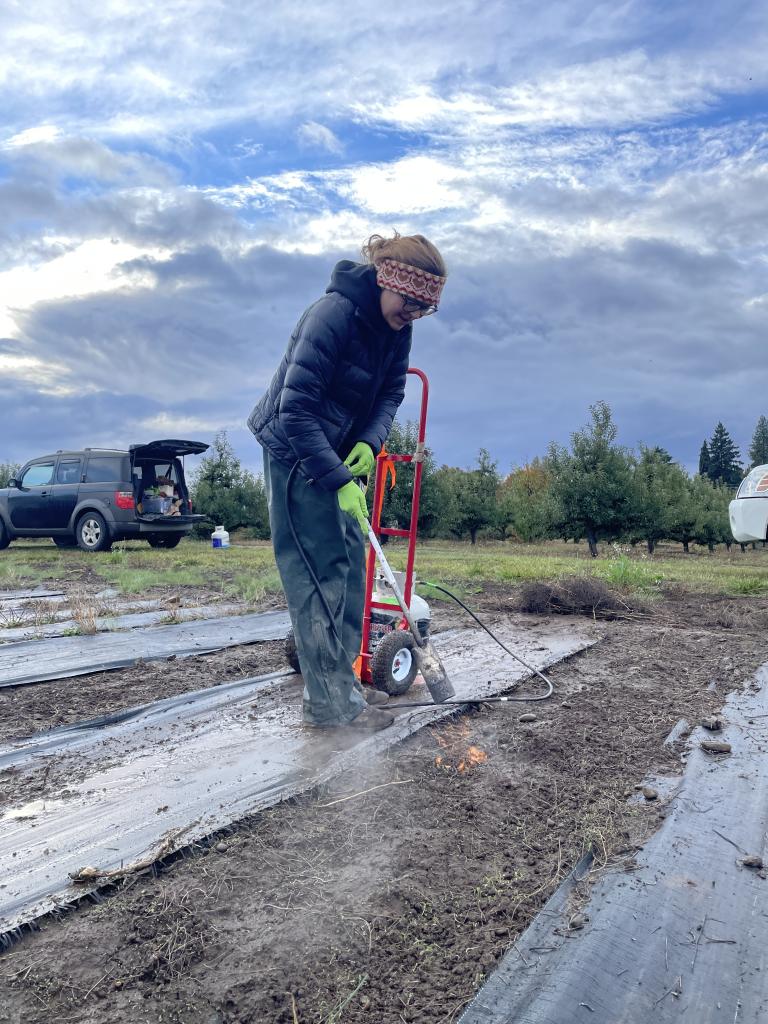
What is your favorite thing about IAE’s culture?
C: How candid and authentic everyone is. I’ve always felt free to be myself with everyone who works here and it’s a refreshing experience!
B: The staff at IAE is genuine, kind and knowledgeable. Everyone is happy to take the time to help or teach you a skill, whether it be identifying a plant or showing you how to safely use a chainsaw.

What was your favorite species or plant to learn about and work with?
C: I’ve developed a real soft spot for Nelson’s checkermallow (Sidalcea nelsoniana) in the past year. I spent the previous summer 2022 field season monitoring populations of it around the Valley and helping to grow it in IAE’s greenhouse!
B: There were several amazing species we had the opportunity to work with. My hands-down favorite plant to interact with was Darlingtonia californica. I had studied carnivorous plants extensively during my undergraduate work so it was a dream to be able to monitor them in their natural habitat. Another species I really enjoyed learning about was Limnanthes pumila ssp. pumila, or dwarf woolly meadowfoam. We hiked to the top of Table Rock, near Medford, OR, to monitor this threatened endemic species that relies on vernal pool habitat.
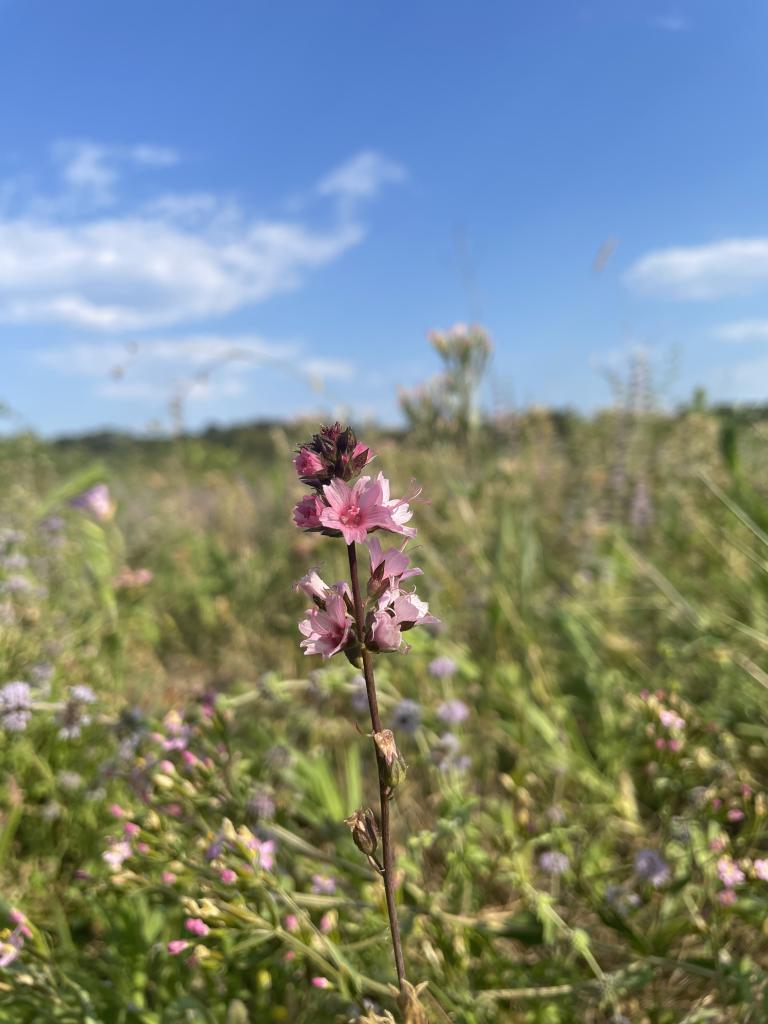
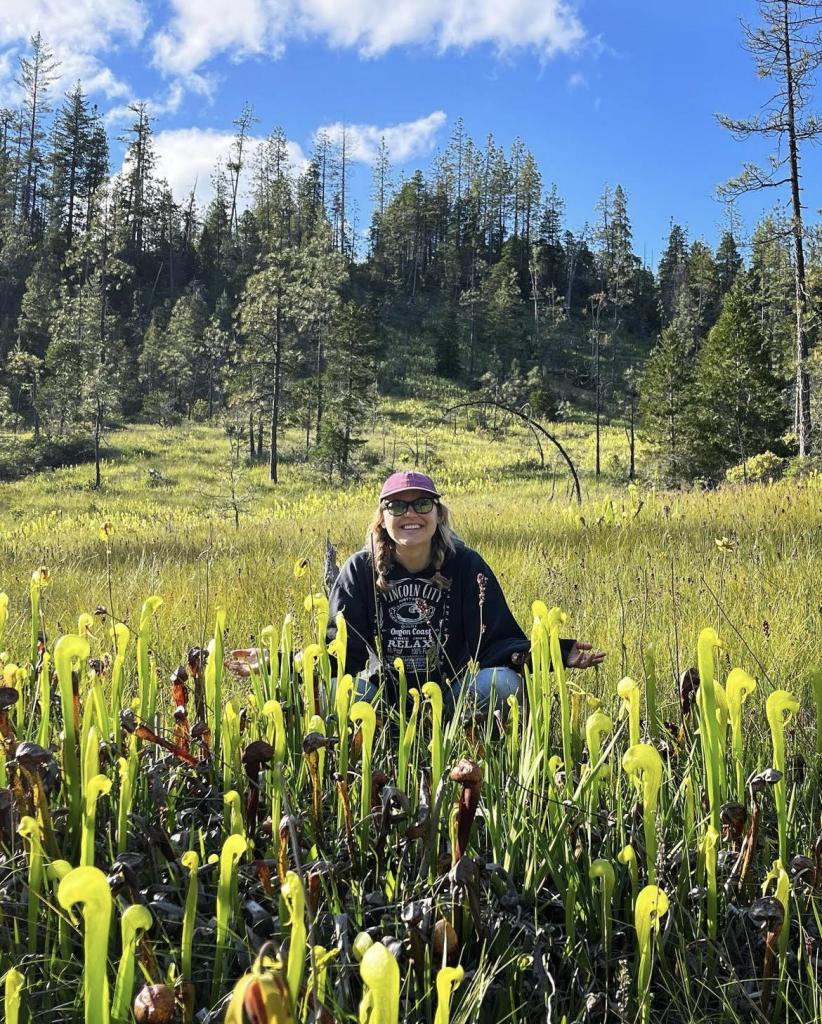
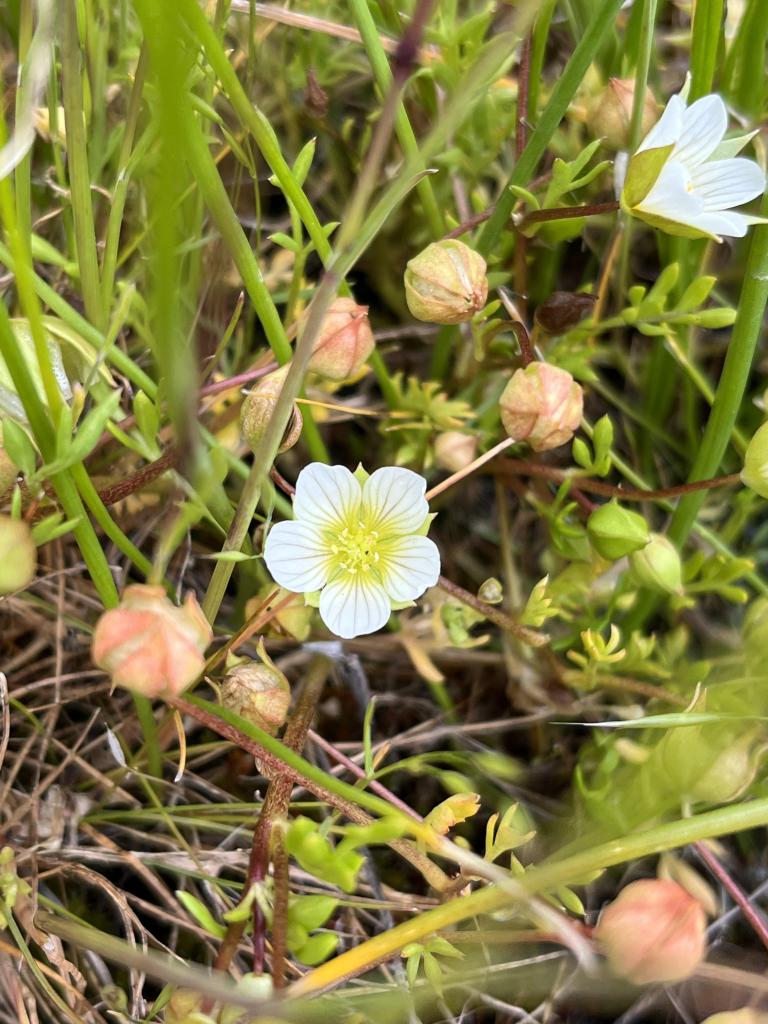
What was the strangest thing you learned about ecology at IAE?
C: I think the sheer number of factors that influence plant morphology is a very strange and interesting thing I’ve learned about plant ecology at IAE. What growth stage is this plant at? Its leaves may look different. Is this plant in full sun or full shade? Its leaves and/or growth pattern may be different. Also–there are SO many look-a-like species out there!
B: Wasps will hunt you down and hornets hold grudges.

How do you compare this internship with others?
C: N/A
B: I deeply valued the year-long experience that this internship provided. I felt that I had the time, space, and community to really learn a multitude of skills that simply wouldn’t be possible in a shorter time frame. It was also amazing to work with all the different programs at IAE. Every program had something new and different to offer.
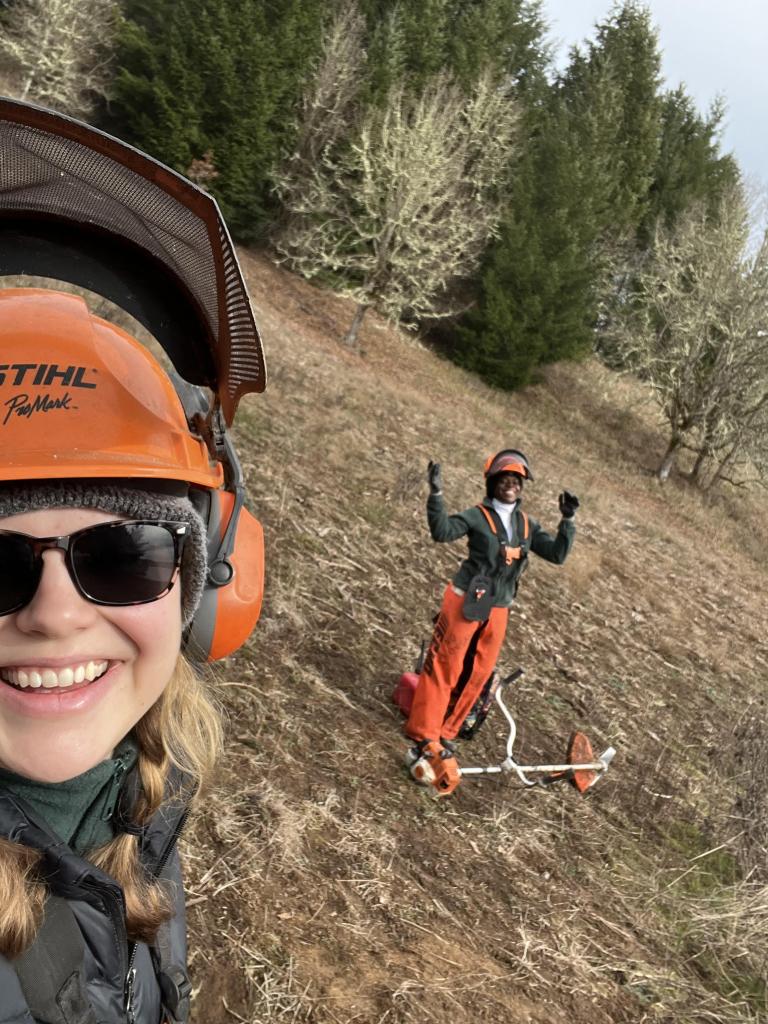
What’s your biggest takeaway from the experience?
C: I think the biggest takeaway from this internship for me is that I have proven to myself that I am very adaptable, flexible, and learn skills quickly. I think I was a bit nervous plunging right into a full time job straight out of the gates of university, but my time here has been a resounding success and it’s definitely something I’m proud of!
B: My biggest takeaway is gratitude. It was an incredible experience to be able to work in gorgeous locations with fabulous coworkers, learning about plant species that most people will never see in their lifetime. It’s been a gift and a pleasure.
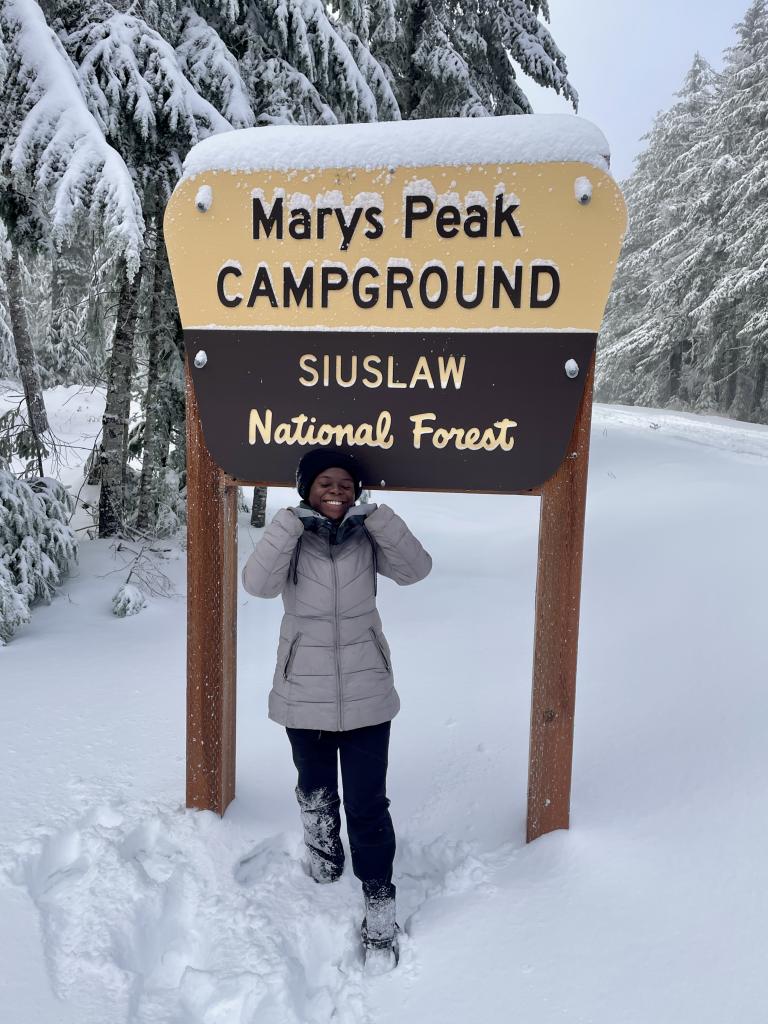
If you could extend your time with IAE, what would you want to learn more about?
C: Spending more time honing transferable technical skills such as working on more projects in ArcGIS and more data analysis exercises.
B: I would love to gain more in-depth experience working with ArcGIS.
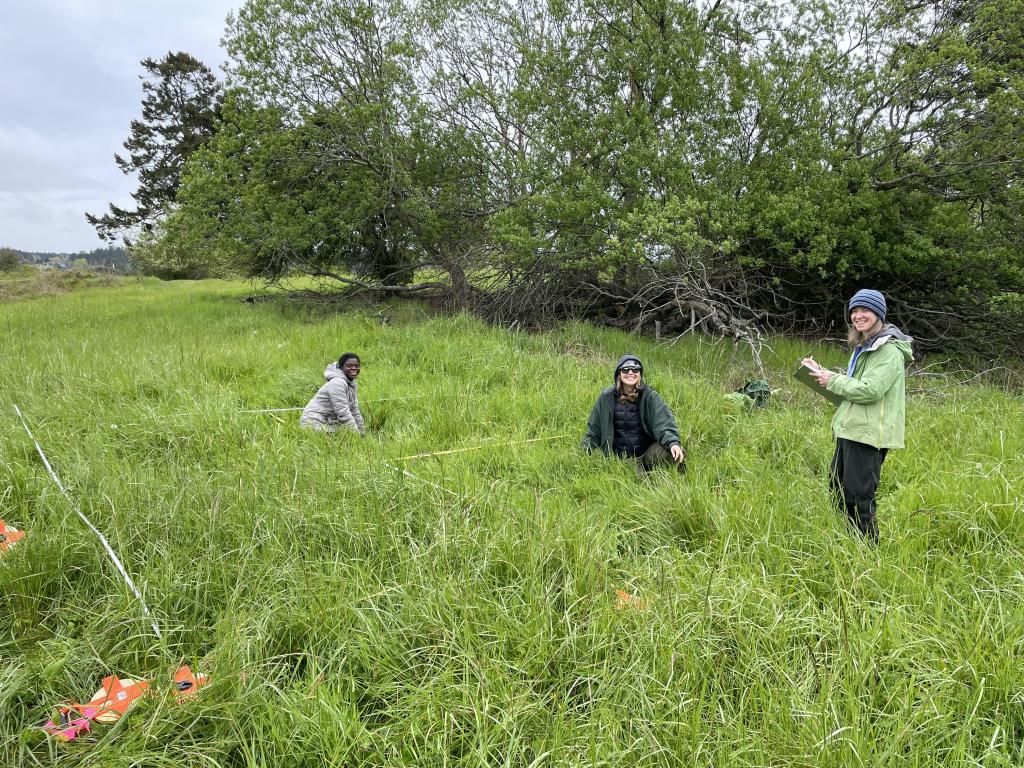
What do you hope to get out of this experience in terms of your next steps? How will you use the knowledge you’ve acquired at IAE?
C: I know that a lot of the skills I’ve obtained from my time at IAE will be transferable for future positions. By the end of my time, I will have two full field seasons of experience, my name on a published technical report, crew leading experience, and a ton of invaluable connections with the incredible people who work here.
B: I hope to use my knowledge and skills as building blocks for future education and career opportunities.
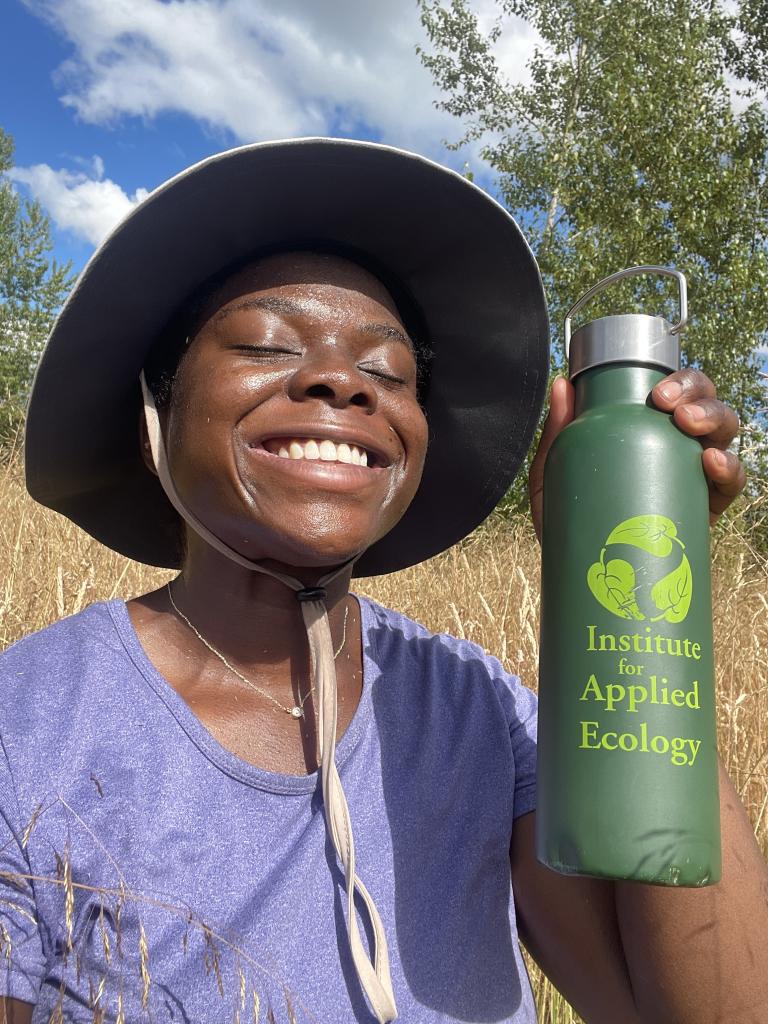
What’s next for you?
C: I will be continuing with IAE throughout the summer field season as the crew lead for the Willamette Valley sensitive species monitoring crew!
B: I will be a member of IAE’s Conservation Research crew for the upcoming field season.
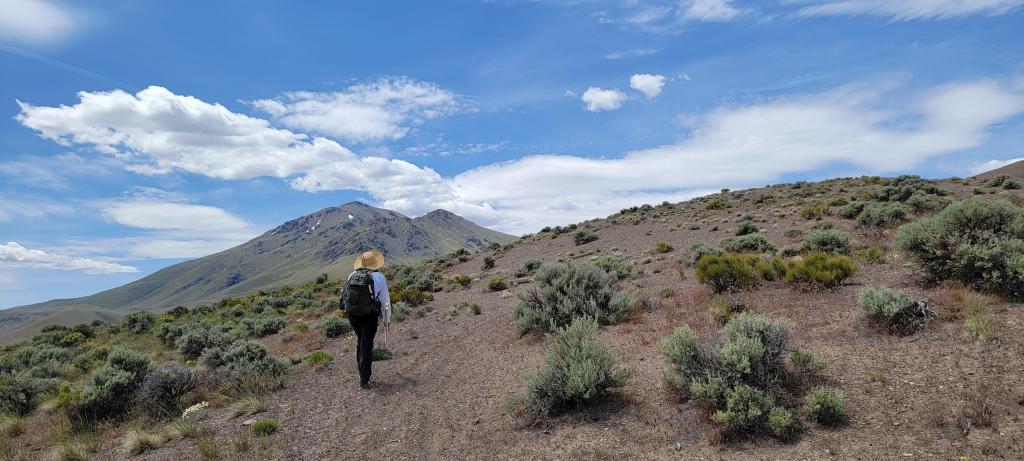
Do you have any words of wisdom for the new staff or next class of interns?
C: Be open to all of the experiences you’re offered and know that there’s always something new to learn!
B: For future interns: at the start of your internship, think about what you want to gain out of this experience and voice those goals. Also, say yes to everything… you never know what skills you may learn.
We are so glad to continue working with Brooke and Cierra, and thank you for sharing your skills and dedication to conservation! IAE would like to express its sincere gratitude and thanks to Jim and Birte Falconer for their generous support and funding which has made this internship program possible—thank you, Jim and Birte!

